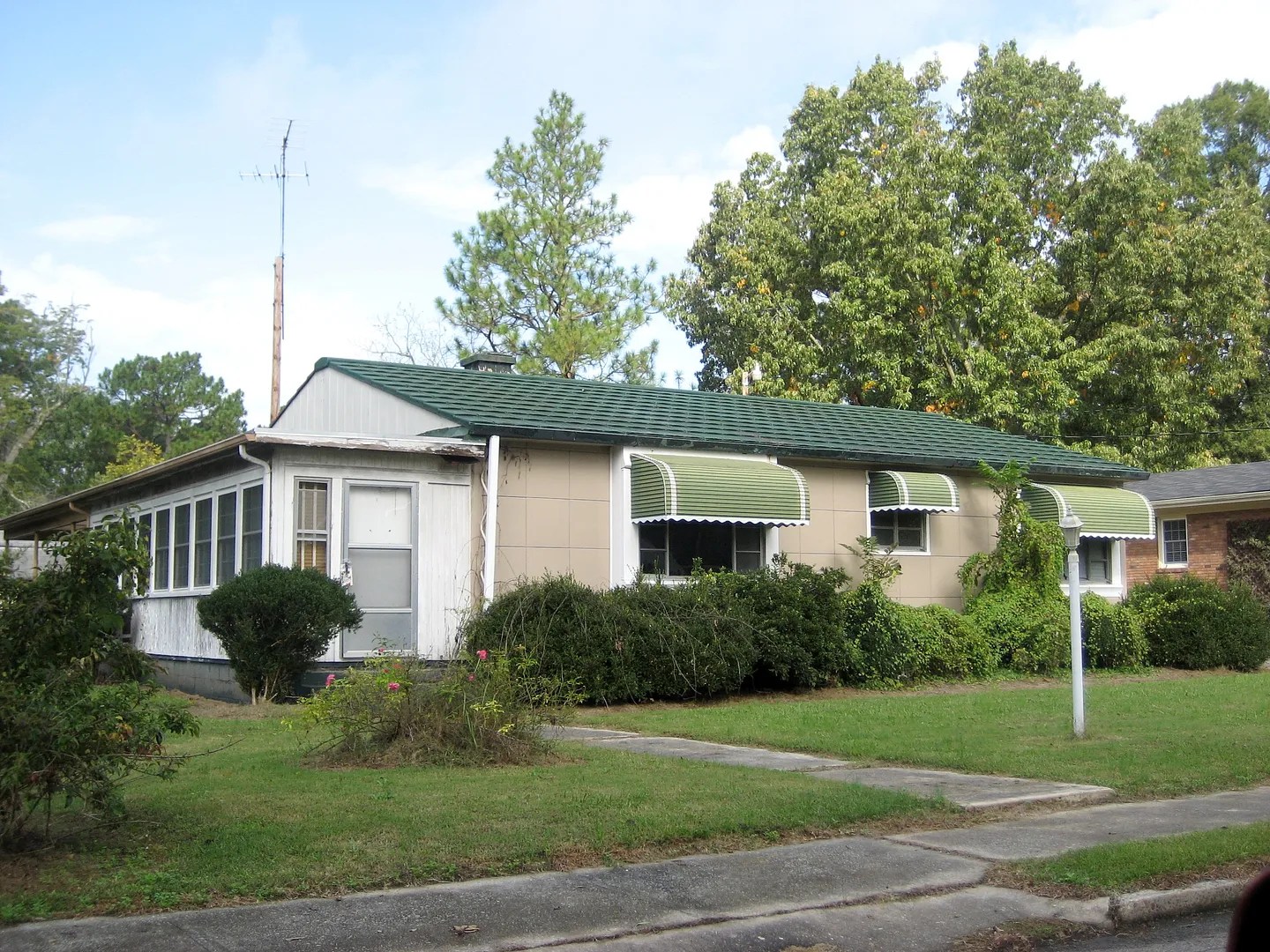Lustron homes: Born from post-war necessity, these prefabricated steel houses offered a unique solution to the housing shortage, showcasing innovative design and enduring durability. More than just metal boxes, they represent a distinct chapter in American architectural history, blending affordability, efficiency, and a surprisingly modern aesthetic. Though production ceased in 1950, approximately 2,000 Lustron homes still stand, captivating mid-century modern enthusiasts and serving as testaments to Carl Strandlund’s ambitious vision. Discovering a Lustron home today is a rare find, offering a low-maintenance, historically significant dwelling with undeniable curb appeal and a fascinating backstory. Let’s delve into the world of these steel time capsules.
The Post-War Dream: How Lustron Homes Emerged
After World War II, America faced a critical housing shortage. Returning GIs needed homes, and they needed them fast. Enter Carl Strandlund, a Chicago industrialist with a vision as bold as the steel he proposed to build with. Why not, he reasoned, build houses the way we build cars? Leveraging his experience with prefabricated steel buildings, Strandlund envisioned mass-produced homes that could be assembled quickly and affordably. With substantial government backing (reflecting the urgency of the housing crisis), the Lustron Corporation was born, promising a solution to the nation’s housing woes. These weren’t your typical wood-and-brick homes; these were gleaming symbols of progress, clad in porcelain-enameled steel.
Building the Future: Lustron’s Innovative Construction
Imagine a house delivered on a flatbed truck, ready for assembly like a giant erector set. That was the Lustron promise. Prefabricated enameled steel panels formed the walls, roof, and even interior components. This unconventional approach offered unparalleled durability, resistance to fire, pests, and decay, and remarkably low maintenance – you could practically hose them down! The standardized floor plans and integrated features further expedited construction. Lustron homes were not just houses; they were a carefully engineered system, a testament to the era’s faith in technology and mass production. This innovative spirit echoes in contemporary architectural trends like the use of microcement bathroom finishes, which prioritize both modern aesthetics and practicality.
A Flash of Brilliance: The Lustron Aesthetic
Lustron homes didn’t just offer practicality; they embraced a distinct style. Their clean lines, open floor plans, and integration with nature prefigured the popular mid-century modern movement. Built-in furniture, radiant heating systems, and the signature “zig-zag” detailing added to their unique charm. The limited color palette, initially in pastel shades, contributed to a cohesive aesthetic. This forward-thinking design continues to resonate today, influencing contemporary architecture much like the timeless elegance of a traditional Japanese minka house.
From Boom to Bust: The Fall of the Lustron Corporation
Initially, Lustron homes were a hit. The promise of a modern, affordable, easily maintained home resonated with post-war America. Homes were shipped across the country, offering families a fresh start. But the dream was short-lived. Financial mismanagement, production bottlenecks, and rising material costs created a perfect storm. The Lustron Corporation, despite government support, struggled to stay afloat. By 1950, production had ceased, leaving behind approximately 2,680 Lustron homes scattered across the US, Alaska, and even Venezuela – a testament to a bold, albeit brief, experiment in housing.
Living in Steel: The Lustron Legacy Today
Today, roughly 2,000 Lustron homes survive, cherished by preservationists and mid-century modern enthusiasts. Many are listed on the National Register of Historic Places. But what is it like to live in a Lustron home in the 21st century? Some homeowners find the steel construction and low maintenance a blessing, while others encounter challenges with the unique material. Ongoing research explores issues like enamel chipping and cracking, suggesting that the long-term durability of these homes, while impressive, may have limitations.
Preserving the Past: Challenges and Opportunities
Preserving Lustron homes presents unique challenges. The specialized construction requires specific expertise, and original parts can be scarce. Organizations like Lustron Research play a vital role in documenting surviving homes and disseminating information crucial for restoration efforts. The future of Lustron preservation lies in balancing historical accuracy with the needs of modern living.
Why Lustron Failed: A Multifaceted Story
Lustron’s demise wasn’t a simple story. While financial mismanagement undoubtedly played a significant role, other factors likely contributed. Production inefficiencies, competition from conventional housing, and clashes with local building codes added to the company’s woes. The post-war economic climate and fluctuating material costs further strained resources. Ongoing research continues to unravel the complex interplay of factors that led to the company’s downfall.
Lustron vs. the Competition: A Look at Prefab Housing Then and Now
How did Lustron homes compare to other prefab options of the era? What were their unique advantages and disadvantages? While Lustron’s steel construction offered durability, other prefab systems prioritized different materials and design approaches. Examining these differences provides valuable context for understanding Lustron’s place in the broader history of prefabricated housing. It also sheds light on the evolving landscape of prefab construction today.
The Lustron Allure: A Unique Piece of American History
Lustron homes remain a captivating subject. Their innovative construction, distinct aesthetic, and historical context offer a unique glimpse into post-war America’s dreams and challenges. They serve as a reminder that even bold experiments, though they may not fully realize their initial promise, can leave a lasting legacy. Discovering a Lustron home today is like stumbling upon a hidden treasure, a tangible piece of architectural history waiting to tell its story.
- Drano vs. Liquid-Plumr: Which Drain Cleaner Works Best in 2024? - April 14, 2025
- Exterior Door Thresholds: A Complete Guide to Choosing & Installing - April 14, 2025
- Shower Door Seals: Stop Leaks & Find the Perfect Fit - April 14, 2025










